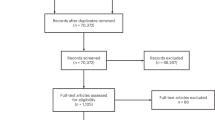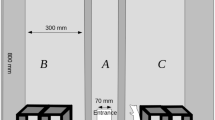Abstract
Laboratory animals should be provided with enrichment objects in their cages; however, it is first necessary to test whether the proposed enrichment objects provide benefits that increase the animals’ welfare. The two main paradigms currently used to assess proposed enrichment objects are the choice test, which is limited to determining relative frequency of choice, and consumer demand studies, which can indicate the strength of a preference but are complex to design. Here, we propose a third methodology: a runway paradigm, which can be used to assess the strength of an animal’s motivation for enrichment objects, is simpler to use than consumer demand studies, and is faster to complete than typical choice tests. Time spent with objects in a standard choice test was used to rank several enrichment objects in order to compare with the ranking found in our runway paradigm. The rats ran significantly more times, ran faster, and interacted longer with objects with which they had previously spent the most time. It was concluded that this simple methodology is suitable for measuring rats’ motivation to reach enrichment objects. This can be used to assess the preference for different types of enrichment objects or to measure reward system processes.
Similar content being viewed by others
References
Bradshaw, A. L., & Poling, A. (1991). Choice by rats for enriched versus standard home cages: Plastic pipes, wood platforms, wood chips, and paper towels as enrichment items. Journal of the Experimental Analysis of Behavior, 55, 245–250.
Burns, R. A., & Griner, S. E. (1993). Single-alternation patterning in sated, sucrose-rewarded rats. Bulletin of the Psychonomic Society, 31, 35–36.
Burns, R. A., Ziropadja, L., & Djuric, V. (1984). Effects of liquid sucrose reward reduction on the performance of deprived and nondeprived rats. Journal of General Psychology, 110, 223–228.
Chmiel, D. J., & Noonan, M. (1996). Preference of laboratory rats for potentially enriching stimulus objects. Laboratory Animal, 30, 97–101.
Flaherty, C. F., Riley, E. P., & Spear, N. E. (1973). Effects of sucrose concentration and goal units on runway behavior in the rat. Learning & Motivation, 4, 163–175.
Hanmer, L. A. (2008). Rats’ interactions with enrichment objects are naturally rewarding: A study of object preference and reward processes. Unpublished doctoral dissertation, University of Reading, England.
Heizmann, V., Jonas, I., Hirschenauer, K., & Havelec, L. (1998). Choice tests with groups of mice: Nestbox, nesting material and tubes as enrichment items for laboratory mice. Journal of Experimental Animal Science, 39, 43–60.
Ikemoto, S., & Panksepp, J. (1996). Dissociations between appetitive and consummatory responses by pharmacological manipulations of reward-relevant brain regions. Behavioral Neuroscience, 110, 331–345.
Nencini, P., Graziani, M., & Valeri, P. (1991). Dapiprazol prevents U50,488H-mediated suppression of preparatory components of drinking behavior in rats. Pharmacology, Biochemistry, & Behavior, 40, 125–128.
Patterson-Kane, E. G. (2003). Shelter enrichment for rats. Contemporary Topics in Laboratory Animal Science, 42, 46–48.
Sherwin, C. M., & Nicol, C. J. (1997). Behavioural demand functions of caged laboratory mice for additional space. Animal Behavior, 53, 67–74.
Sørensen, D. B., Krohn, T. C., Hansen, H., Ottesen, J., & Hansen, A. K. (2005). An ethological approach to housing requirements of golden hamsters, Mongolian gerbils and fat sand rats in the laboratory: A review. Applied Animal Behaviour Science, 94, 181–195.
Townsend, P. (1997). Use of in-cage shelters by laboratory rats. Animal Welfare, 6, 95–103.
Van de Weerd, H. A., Van Loo, P. L. P., Van Zutphen, L. F. M., Koolhaas, J. M., & Baumans, V. (1998a). Preferences for nest boxes as environmental enrichment for laboratory mice. Animal Welfare, 7, 11–25.
Van de Weerd, H. A., Van Loo, P. L. P., Van Zutphen, L. F. M., Koolhaas, J. M., & Baumans, V. (1998b). Strength of preference for nesting material as environmental enrichment for laboratory mice. Applied Animal Behaviour Science, 55, 369–382.
Williams, C. M., Riddell, P. M., & Scott, L. (2008). Comparison of preferences for object properties in the rat using paired-and freechoice paradigms. Applied Animal Behaviour Science, 112, 146–157.
Author information
Authors and Affiliations
Corresponding author
Rights and permissions
About this article
Cite this article
Hanmer, L.A., Riddell, P.M. & Williams, C.M. Using a runway paradigm to assess the relative strength of rats’ motivations for enrichment objects. Behavior Research Methods 42, 517–524 (2010). https://doi.org/10.3758/BRM.42.2.517
Received:
Accepted:
Published:
Issue Date:
DOI: https://doi.org/10.3758/BRM.42.2.517




